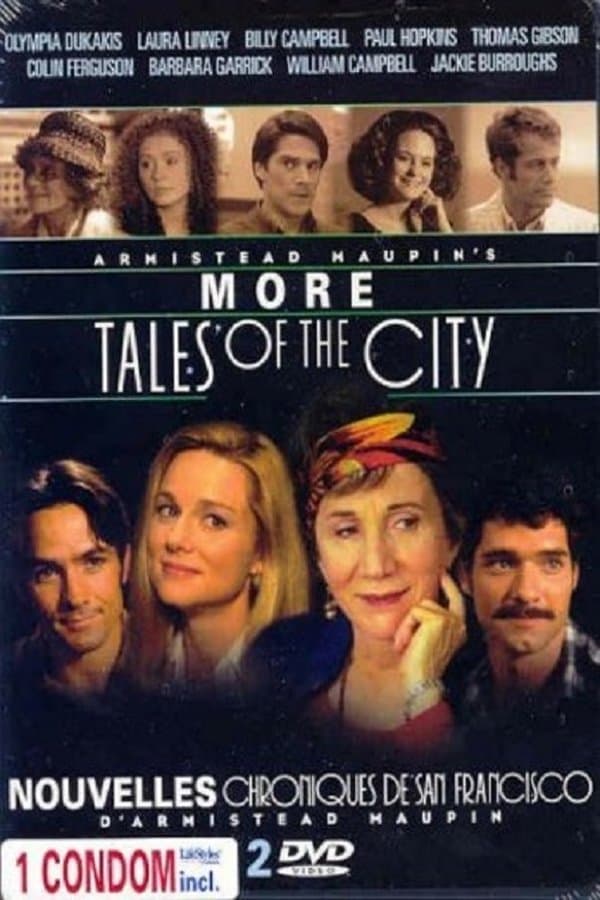
More Tales of the City
1998 • Drama, Mystery • TV-MA
Lonely inhabitants at 28 Barbary Lane search for love and identity, turning to each other in the hope of finding happiness in San Francisco.
Why you should read the novel
Reading 'More Tales of the City' by Armistead Maupin offers an intimate understanding of each character's inner world that no screen can truly capture. The novel unfolds San Francisco’s enchanting charm with nuanced language and sharp wit, making every page a vivid, emotional experience. Those who seek a deeply engaging journey through time, place, and the diverse tapestry of humanity will discover that the book delivers far more depth and warmth than its television adaptation.
Beyond the storyline, Maupin’s prose is filled with subtle details and reflections that invite readers to pause, ponder, and connect with the social and cultural shifts of the era. The internal monologues, character backgrounds, and narrative threads intertwine in unique ways that TV simply can’t reproduce without rushing or simplifying. Readers are treated to a richer understanding of motivations, secrets, and revelations that unfold gradually and satisfyingly.
Ultimately, reading the novel is like being welcomed into a close-knit family of eccentric but lovable residents at 28 Barbary Lane. The book provides space to savor the humor, heartbreak, and hope at the heart of Maupin’s universe, offering a reading experience that lingers in memory—and encourages empathy for lives very different from our own.
Adaptation differences
One significant difference between the book and the miniseries is the level of character development and internal thought processes. The novel delves deeply into the minds and motivations of its characters, revealing their insecurities, desires, and dreams in ways that are difficult to translate to screen. Viewers of the miniseries may miss out on the nuanced psychological layers that Maupin meticulously constructs in his storytelling.
Additionally, some plotlines and side stories present in the novel are either condensed or omitted entirely in the TV adaptation. To accommodate the limited runtime and maintain pacing, the series selectively highlights certain dramatic elements, while other intriguing subplots receive less attention or are cut altogether. These editorial choices necessarily alter the flow and emotional impact of the narrative.
The television adaptation occasionally updates, streamlines, or merges events and relationships to suit the format and tone of the series. This can lead to changes in how characters meet, interact, or resolve their personal challenges. For example, key interactions might be portrayed differently, with dialogue and outcomes reshaped to fit episodic storytelling, sometimes sacrificing the novel’s subtlety or complexity.
Perhaps most notably, the book’s vivid depiction of 1970s San Francisco—its sights, sounds, political climate, and cultural evolution—emerges through detailed description and atmosphere in Maupin’s prose. While the series attempts to recreate this world visually, it can only suggest what the novel masterfully evokes, meaning readers experience a more immersive and textured sense of place than viewers ever could.
More Tales of the City inspired from
More Tales of the City
by Armistead Maupin












